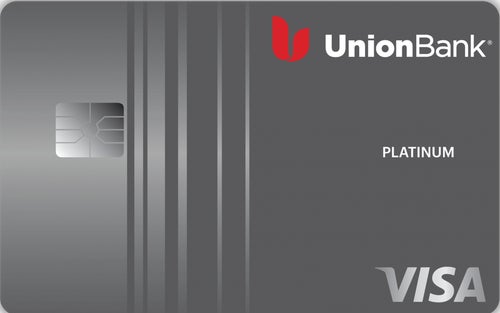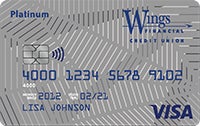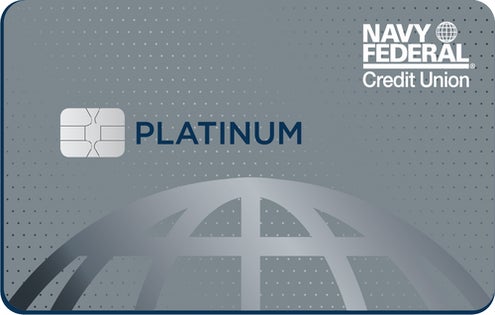The Federal Reserve has steadily been increasing the federal interest rate to combat inflation, which in turn causes the interest rates on credit cards to go up. That means carrying a balance on your credit card will become more expensive.
A balance transfer is a great tool to cut down on credit card debt. It involves moving the balance from one credit card to another that carries a lower interest rate, letting you pay it down while avoiding expensive interest charges. The best balance transfer credit cards provide an introductory 0% APR period for 18 to 21 months, but they typically involve paying a balance transfer fee of 3% to 5% of the transferred balance.
That could be relatively expensive depending on the size of the balance you’re looking to transfer. Instead, you could opt for a balance transfer card that doesn’t charge a fee. However, they typically provide shorter introductory periods -- usually from 12 to 15 months. But if you think you can pay down the balance in that time, consider choosing one of these credit cards.
- Intro Offer
-
No current offer
- Annual fee
- $0
- APR
- 9.99% to 21.49% (Variable)
- Recommended Credit A credit score is used to indicate an applicant’s credit worthiness and may provide guidance about account eligibility. It does not necessarily guarantee approval for any financial product.
-
670 – 850
Good – Excellent
- Rewards rate
-
N/A This card doesn’t offer cash back, miles, or points
The Union Bank® Platinum™ Visa® Credit Card offers 15 months of 0% introductory APR on both purchases and balance transfers, with $0 in balance transfer fees if you complete your first balance transfer within the first 60 days of account opening (after that, 3% of each transfer with a minimum of $10). After the promotional APR period ends, you’ll be subject to a variable APR of 9.99% to 21.49% -- the lower end of this range is very competitive compared to most balance transfer credit cards. There is also no annual fee, making this a safe card to transfer your balance to without any extra costs if you’re diligent.
- Intro Balance Transfer APR
- 0% Introductory APR for the first 15 months that your account is open.
- Intro Purchase APR
- 0% Introductory APR for the first 15 months that your account is open.
- Regular APR
- 9.99% to 21.49% (Variable)
- Balance Transfer Fee
- Either $10 or 3% of the amount of each balance transfer, whichever is greater.
The Union Bank® Platinum™ Visa® Credit Card offers 15 months of 0% introductory APR on both purchases and balance transfers, with $0 in balance transfer fees if you complete your first balance transfer within the first 60 days of account opening (after that, 3% of each transfer with a minimum of $10). After the promotional APR period ends, you’ll be subject to a variable APR of 9.99% to 21.49% -- the lower end of this range is very competitive compared to most balance transfer credit cards. There is also no annual fee, making this a safe card to transfer your balance to without any extra costs if you’re diligent.
- Intro Balance Transfer APR
- 0% Introductory APR for the first 15 months that your account is open.
- Intro Purchase APR
- 0% Introductory APR for the first 15 months that your account is open.
- Regular APR
- 9.99% to 21.49% (Variable)
- Balance Transfer Fee
- Either $10 or 3% of the amount of each balance transfer, whichever is greater.
- Intro Offer
-
No current offer
- Annual fee
- $0
- APR
- 8.15% – 18.00% variable APR
- Recommended Credit A credit score is used to indicate an applicant’s credit worthiness and may provide guidance about account eligibility. It does not necessarily guarantee approval for any financial product.
- N/A
- Rewards rate
-
N/A This card doesn’t offer cash back, miles, or points
Wings Financial Credit Union is based in Minnesota, but you can join by making a $5 donation to the Wings Financial Foundation. After that, you can apply for the Wings Visa Platinum Credit Card*, which charges no annual or balance transfer fees and offers 12 months of 0% introductory APR on balance transfers and purchases (8.15% to 18.00% variable APR thereafter).
- Intro Balance Transfer APR
- 0% intro APR for 12 months from account opening on BTs
- Intro Purchase APR
- 0% intro APR for 12 months from account opening on purchases
- Regular APR
- 8.15% – 18.00% variable APR
- Balance Transfer Fee
- None
Wings Financial Credit Union is based in Minnesota, but you can join by making a $5 donation to the Wings Financial Foundation. After that, you can apply for the Wings Visa Platinum Credit Card*, which charges no annual or balance transfer fees and offers 12 months of 0% introductory APR on balance transfers and purchases (8.15% to 18.00% variable APR thereafter).
- Intro Balance Transfer APR
- 0% intro APR for 12 months from account opening on BTs
- Intro Purchase APR
- 0% intro APR for 12 months from account opening on purchases
- Regular APR
- 8.15% – 18.00% variable APR
- Balance Transfer Fee
- None
- Intro Offer
-
No current offer
- Annual fee
- None
- APR
- 6.99% to 18.00% (Variable) when you open your account, based on your credit worthiness
- Recommended Credit A credit score is used to indicate an applicant’s credit worthiness and may provide guidance about account eligibility. It does not necessarily guarantee approval for any financial product.
- N/A
- Rewards rate
-
N/A This card doesn’t offer cash back, miles, or points
First Tech Federal Credit Union is based out of San Jose, California, and catered initially to employees of tech companies in the Pacific Northwest. Today, you can become a member if you work for one of their partner companies or become a member of the Computer History Museum ($15 for an annual membership) or the Financial Fitness Association ($8 for an annual membership).
The First Tech Platinum Mastercard* credit card also offers 12 billing cycles of 0% introductory APR on balance transfers (6.99% to 18.00% variable APR thereafter) with no credit card balance transfer fees.
- Intro Balance Transfer APR
- Introductory 0.00% APR balance transfer for 12 billing cycles
- Intro Purchase APR
- N/A
- Regular APR
- 6.99% to 18.00% (Variable) when you open your account, based on your credit worthiness
- Balance Transfer Fee
- None
First Tech Federal Credit Union is based out of San Jose, California, and catered initially to employees of tech companies in the Pacific Northwest. Today, you can become a member if you work for one of their partner companies or become a member of the Computer History Museum ($15 for an annual membership) or the Financial Fitness Association ($8 for an annual membership).
The First Tech Platinum Mastercard* credit card also offers 12 billing cycles of 0% introductory APR on balance transfers (6.99% to 18.00% variable APR thereafter) with no credit card balance transfer fees.
- Intro Balance Transfer APR
- Introductory 0.00% APR balance transfer for 12 billing cycles
- Intro Purchase APR
- N/A
- Regular APR
- 6.99% to 18.00% (Variable) when you open your account, based on your credit worthiness
- Balance Transfer Fee
- None
- Intro Offer
-
No current offer
- Annual fee
- None
- APR
- 8.99% – 18.00% Variable
- Recommended Credit A credit score is used to indicate an applicant’s credit worthiness and may provide guidance about account eligibility. It does not necessarily guarantee approval for any financial product.
- N/A
- Rewards rate
-
N/A This card doesn’t offer cash back, miles, or points
The Navy Federal Credit Union is for members of the armed forces, veterans and their immediate family members. If you qualify for this card, you can enjoy 12 months of 0% introductory APR on balance transfers with a 8.99% to 18% variable APR thereafter -- along with no balance transfer fees. But you’ll have to initiate the balance transfer within 60 days of opening your account in order to take advantage of this offer.
- Intro Balance Transfer APR
- 0% intro APR for 12 months on balance transfers
- Intro Purchase APR
- N/A
- Regular APR
- 8.99% – 18.00% Variable
- Balance Transfer Fee
- N/A
The Navy Federal Credit Union is for members of the armed forces, veterans and their immediate family members. If you qualify for this card, you can enjoy 12 months of 0% introductory APR on balance transfers with a 8.99% to 18% variable APR thereafter -- along with no balance transfer fees. But you’ll have to initiate the balance transfer within 60 days of opening your account in order to take advantage of this offer.
- Intro Balance Transfer APR
- 0% intro APR for 12 months on balance transfers
- Intro Purchase APR
- N/A
- Regular APR
- 8.99% – 18.00% Variable
- Balance Transfer Fee
- N/A
How to choose a card with no balance transfer fee
The main feature is the length of the balance transfer offer. You’ll want to make sure you have enough time to pay down a transferred balance before it begins to accrue interest again.
To do so, divide the transferred balance by the number of months in the promotional period. That tells you how much you’ll have to pay each month to pay down your debt. If you can’t afford that monthly amount, consider a balance transfer card with a longer introductory period or another debt consolidation option.
“Balance transfer cards may buy you some time if they have no-interest grace periods, which are great. But you still have to be able to pay it off before the grace period ends,” credit expert John Ulzheimer, formerly of FICO and Equifax, told CNET.
It’s also a good idea to make sure the balance transfer card doesn’t require an annual fee. That would just add another payment on top of your monthly payments.
And while avoiding a balance transfer fee may sound enticing, there are times where paying one could be worth it. Balance transfer credit cards that don’t have a fee often provide a shorter introductory APR period.
Should you consider a low-fee balance transfer fee card?
If you can pay down a transferred balance quickly, opting for a card without a balance transfer fee could save you a bit of money. You’ll need to make sure you’re able to pay off the balance within the given time frame, of course.
If you need more time to pay down the transferred balance, however, paying a balance transfer fee could give it to you. The balance transfer fee is like paying interest on the transferred balance, so consider that extra cost when choosing a balance transfer card.
What to do if you can’t qualify for a balance transfer credit card
Most balance transfer credit cards have steep credit requirements in the good to excellent range. This means to get approved you need a credit score that’s 670 or higher. If you can’t qualify for a balance transfer card, there are still a few roads available to you.
The obvious -- yet not always simplest -- route would be to improve your credit score. However, building credit takes time. You likely won’t see any improvements until about six months. If you’re suffering from expensive interest charges on a credit card with a high APR, it’s not always a feasible option.
“It can take years to improve your credit to a point where you can qualify for a balance transfer card. Years spent paying credit card interest, which is expensive,” Ulzheimer said.
If you need to transfer a balance now because you’re struggling to make debt repayments, there are other lower-interest debt management solutions you can explore. A debt consolidation loan, for example, is generally easier to qualify for than a balance transfer card, has fixed-rate payments (so you don’t have to worry about interest rates increasing during your loan term) and typically has longer terms, up to about seven years. There are also personal loan options available if your credit is on the lower side.
“Installment debt [such as a debt consolidation loan or a personal loan] is generally less expensive than credit card debt. It’s also practically benign to your credit scores,” Ulzheimer said. “You’re likely to pay off the debt faster than if you just made the minimum payment on your credit cards.”
Another option is to put together a debt payoff plan, like the debt avalanche or debt snowball method. With the debt avalanche method, you’ll make the minimum payments on all of your credit accounts each month, and put extra payments toward the debt with the highest interest rate. Once that account is paid off, move onto the account with the next highest interest rate, and so forth. Tackling the highest interest accounts first can help you save money in interest while you focus on paying down your debt.
The debt snowball method is similar -- you still maintain minimum payments on all accounts, but you focus extra payments on your smallest debt. This can help you gain momentum as you work toward lowering your debt, which may be helpful if you’re more motivated by seeing progress than saving money on interest.
When is it worth it to pay a balance transfer fee?
While it might feel painful, paying a one-time balance transfer fee will typically cost much less than paying numerous interest charges at a high interest rate.
“Don’t get distracted by the balance transfer fee,” Ulzheimer said. “If you have a balance transfer card that has a zero-interest grace period, and you’re able to pay off the debt at zero interest before the grace period ends, then you’ve certainly made out better financially when you compare the balance transfer fee to the amount of interest you didn’t have to pay.”
For example, according to our sister site Bankrate’s calculator, if you carry a credit card balance of $3,000 on a card with an APR of 18%, it would take you 94 months to pay it down if you’re only paying the minimum payment of $60 each month. By then, you’d have spent $2,586 in interest charges.
Paying a balance transfer fee could also get you a longer time frame to pay down a transferred balance.
How to apply for a no balance transfer fee card
Follow these steps to apply for a credit card with no balance transfer fee:
- Choose the card that offers enough time to pay down a transferred balance.
- Follow the links above to be directed to the credit card issuer’s site.
- Fill out the application with the required financial and personal information.
- Make sure you initiate any transfers within the given time frame to qualify for the introductory balance transfer rate.
- Make all of your payments on time.
FAQs
Simply multiply the amount you’re looking to transfer by the fee. For example, if you transfer $3,000 and there’s a balance transfer fee of 3%, you would do 3,000 x 0.03. The balance transfer fee would be $90.
The industry standard balance transfer fee is 3%, but some cards have a higher 5% fee.
While there’s no limit to the balance you can transfer, you’re only able to transfer up to the available credit limit on your credit card.
While a balance transfer itself won’t affect your credit score significantly, your credit score can improve if you pay down your credit card debt.
A credit card with no balance transfer fee lets you transfer a balance from one account to another without paying an upfront transfer fee, generally between 3% and 5%. The trade-off is a shorter introductory APR period for balance transfers.
A credit card with no balance transfer fee and a 0% APR offers a way to pay off high-interest credit card debt without paying a dime in interest or fees, but only if you can pay it off within one year. If you need more time, it might be better to consider a card with a balance transfer fee that has a longer no-interest or low intro APR period.
Our methodology
CNET reviews credit cards by exhaustively comparing them across set criteria developed for each major category, including cash-back, welcome bonus, travel rewards and balance transfer. We take into consideration the typical spending behavior of a range of consumer profiles -- with the understanding that everyone’s financial situation is different -- and the designated function of a card.
For cash-back credit cards, for example, key factors include the annual fee, the “welcome bonus” and the cash-back rate (or rates, if they differ by spending category). For rewards and miles cards, we calculate and weigh the net monetary value of a card’s respective perks. And with balance transfer credit cards, we analyze specs such as the duration of the introductory 0% APR period and the balance transfer fee, while acknowledging secondary factors such as the standard APR and the length of time you have to make a balance transfer after you open the account.
More credit card recommendations
- Best Credit Cards for No Credit
- Best Student Credit Cards
- Best Cash-Back Credit Cards
- Best Business Credit Cards
- Best Airline Credit Cards
*All information about the Wings Visa Platinum Credit Card, First Tech Platinum Mastercard, and the SunTrust Prime Rewards Credit Card has been collected independently by CNET and has not been reviewed by the issuer.
The editorial content on this page is based solely on objective, independent assessments by our writers and is not influenced by advertising or partnerships. It has not been provided or commissioned by any third party. However, we may receive compensation when you click on links to products or services offered by our partners.








